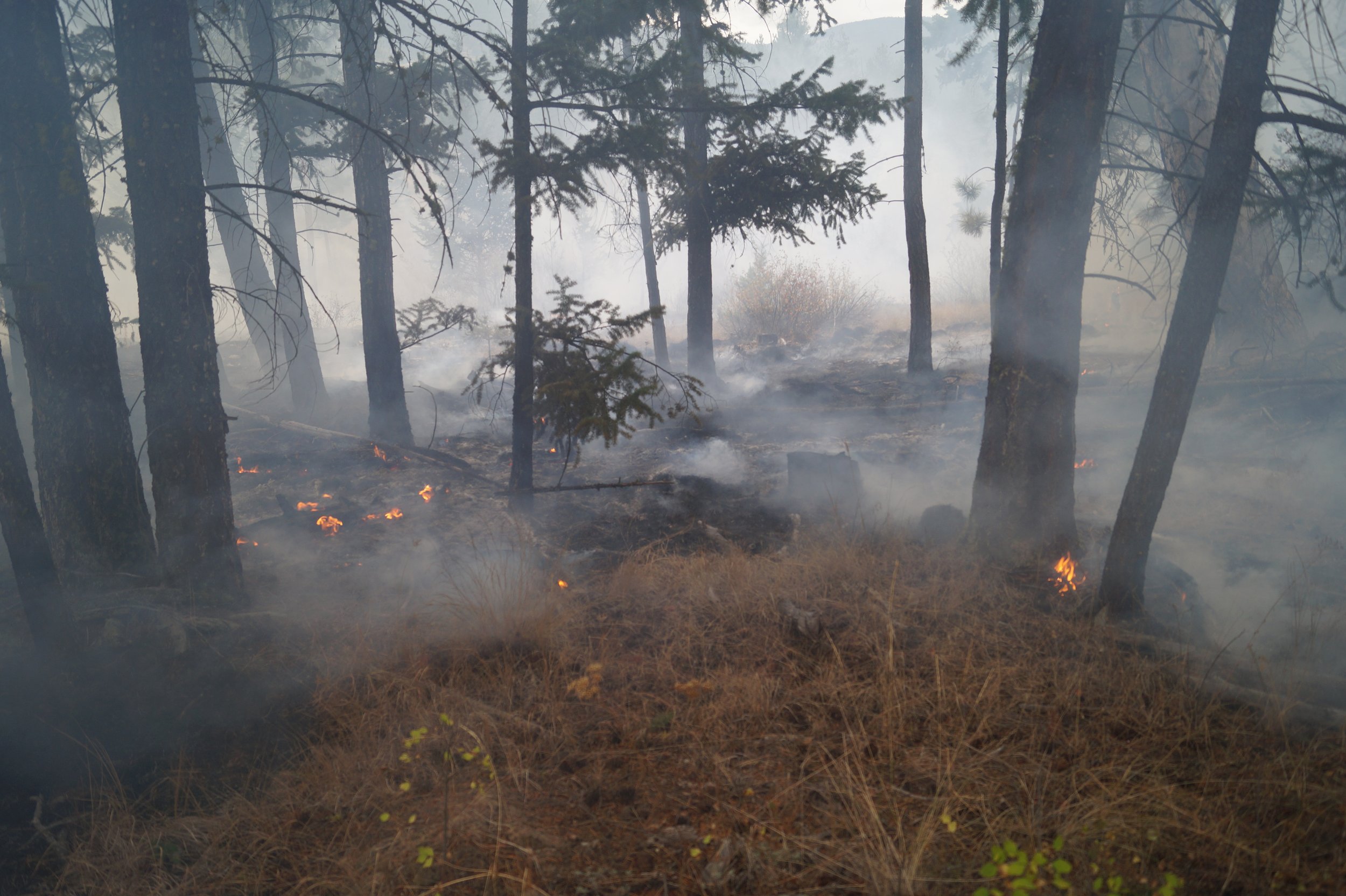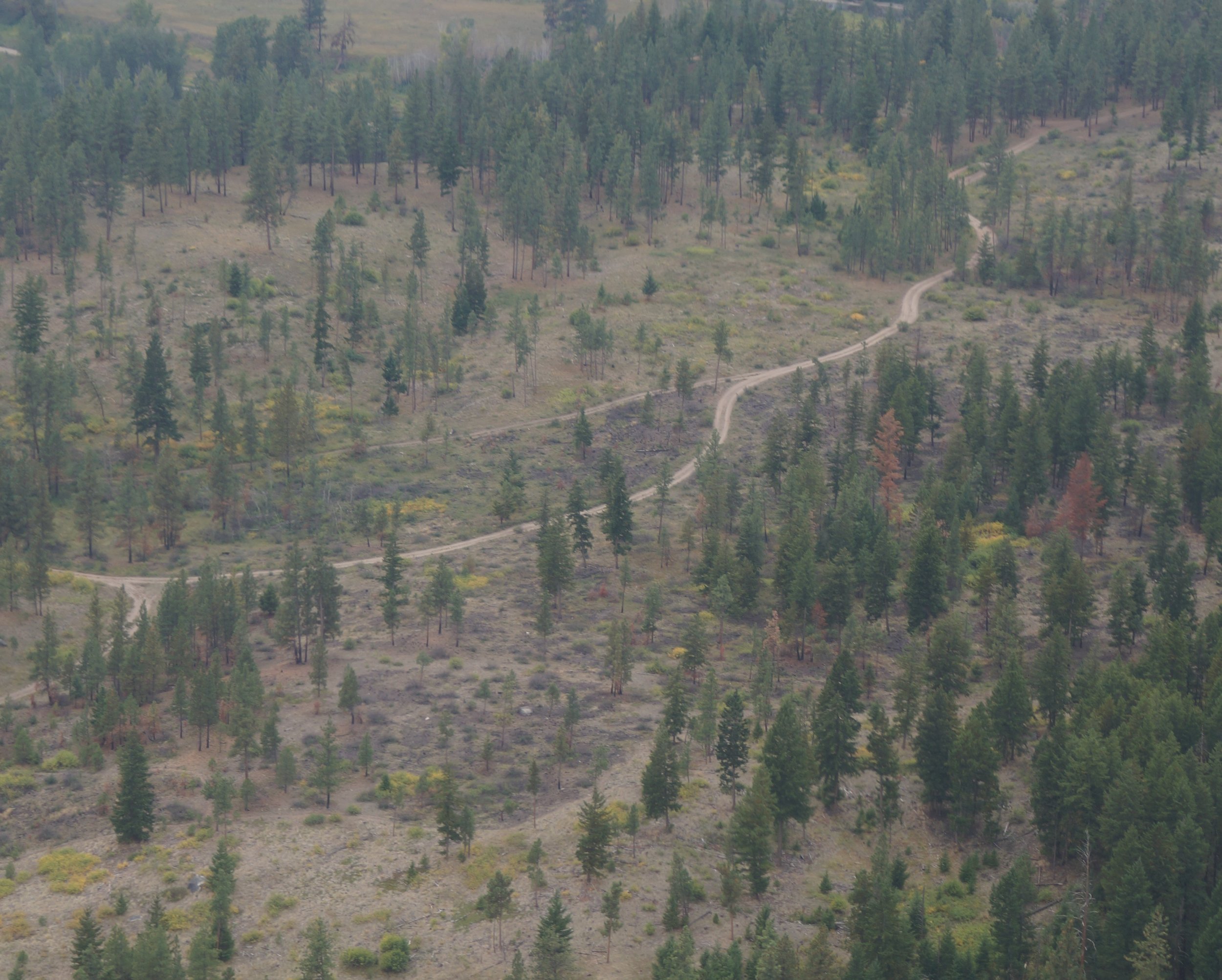Spring is a time of awakening from the colder winter months and time when new growth of plants begins. Some plant growth is a result of the lifecycle of the plant, but some plants need fire to stimulate their growth. This is achieved through the use of cultural burning for land management. Cultural burning has been practiced worldwide by indigenous cultures for generations. If we look after the land, it will look after us.
As grasses and shrubs in the bottom valleys slowly emerge from dormancy, there is a window of time where brown, cured grasses can be burned in a careful and controlled manner by experienced individuals prior to green up to ‘clean up’ areas and improve habitat. Fire Keepers, an english term that has been adopted recently by First Nations in Canada and tribal nations across both North and South America, are working to educate the public about the importance of traditional ecological fire knowledge and how it benefits all of us. Fire Keepers look at local weather conditions, such as winds, humidity, terrain to plan and design burns. These cool burns (approximately <500°F) are based in ceremony and are controlled, low intensity, slow burning of select areas of land that are planned in the spring and fall. In many First Nation Communities, it was the grandmothers who determined where burns were to take place. As family matriarchs they knew areas that needed to be managed or areas of food harvest. This knowledge centres on the respect and care for the land and acknowledges the intimate relationship between plants, people, smoke, soil and controlled burns.
Syilx Fire Keeper and retired Fire Warden, Walter Archachan, who has worked in the Merritt Fire Zone for over 50 years says, “Our lands need a good smudge.” The smudge is coming from the smoke, from good smoke. Good smoke is light coloured, it can be white which indicates that material is off-gassing moisture and water vapor, meaning the fire is just starting to consume material. White smoke can also indicate light and flashy fuels such as grass or twigs. Grey smoke on the land indicates a slow burning fire with larger shrubs and logs burning. Scientific data is also reminding us that plants, trees and animals benefit from good smoke as well.
The benefits from controlled cultural burns are vast. Cultural burns enhance plant growth for hunting and basket materials, cycle nutrients back into the soil (calcium, potassium and magnesium to name a few), reduce massive fuel buildup, improve tree resiliency, and reduce pest infestations. Burns also improve ground bird nesting habitats as birds lay their eggs in black burnt areas to speed up egg incubation. We also see an improvement in ungulate (deer, moose, elk, sheep and caribou) and bear habitat as well. Increases in berry and mushroom productivity supports habitat areas for their food requirements. Cultural burns also retain water in the forest canopy, soils and wetlands helping prevent catastrophic wildfires.
Currently, Salish Fire Keepers Society members are working with interior communities, such as the City of Merritt, to communicate the implementation of this land-based practice. The BC Wildfire Service Merritt Fire Zone and the Lillooet Fire Zone have a long collaborative history of working with Fire Keepers and supporting community cultural burning activities.
During the spring and fall when you see smoke, consider that it might be good smoke.
Nadine Gray is a Kamloops based archaeologist and sessional instructor at TRU.
Jennifer Morrison is a Professional Agrologist and sessional instructor at NVIT
Photo 2: Spring 2021 Aerial view of cultural burn area on the Coldwater Reserve. Photo: Jennifer Morrison




